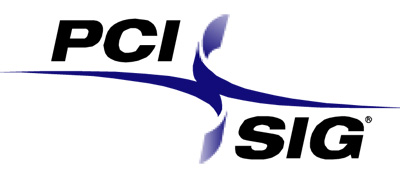AMD's Radeon HD 6990: The New Single Card King
by Ryan Smith on March 8, 2011 12:01 AM EST- Posted in
- AMD
- Radeon HD 6990
- GPUs
PCI-Express Compliance: Does It Even Matter?
For a while now we’ve been under the impression that video card size and power consumption was ultimately capped by the PCI-Express specification. At present time the specification and its addendums specify normal (75W), 150W, 225W, and 300W PCIe card operation. In the case of 300W cards in particular this is achieved through 75W from the PCIe slot, 75W from a 6pin PCIe power connector, and 150W from an 8pin PCIe power connector. As the name implies, the PCIe specification also defines what the 6pin and 8pin power connectors are supposed to be capable of, which is where 75W and 150W come from respectively.
Altogether the biggest, most powerful card configuration in the PCIe specification allows for a 12.283” long, triple-wide card that consumes 300W. To date we’ve never seen a card exceed the physical specifications, but we’ve seen several cards exceed the electrical specifications. This includes cards such as the 5970 and some overclocking-oriented 5870s that were designed to handle more than 300W when overclocked, and even more exotic cards such as the Asus ARES 5870X2 that simply drew more than 300W from the get-go. We have yet to see a reference design from AMD/NVIDIA however that exceeds any part of the PCIe specification by default.

So it has been clear for some time now that cards can exceed the PCIe specifications without incurring the immediately wrath of an army of lawyers, but at the same time this doesn’t establish what the benefits or losses are of being or not being PCIe compliant. To have a reference design exceed the PCIe specifications is certainly a new mark for the GPU industry, so we decided to get right to the bottom of the matter and get an answer to the following question: does PCI-Express compliance matter?
To answer this question we went to two parties. The first of which was of course AMD, whose product is in question. AMD’s answer basically amounts to a polite deflection: it’s an ultra-enthusiast card that at default settings does not exceed the power available by the combination of the PCIe slot and PCIe power connectors. Furthermore, as they correctly note, the 6990 is not the first card to ship at over 300W, as the ARES and other cards were drawing more than 300W a year ago. It’s a polite answer that glosses over the fact that no, the 6990 isn’t technically PCIe compliant.
To get a second opinion on the matter we went straight to the source: The Peripheral Component Interconnect Special Interest Group (PCI-SIG), which is the industry group that defines the PCIe standard and runs the workshops that test for product compliance. The PCI-SIG’s member list is virtually everyone in the computing industry, including AMD, NVIDIA, and Intel, so everyone has some level of representation with the group.

So what does the PCI-SIG think about cards such as the 6990 which exceed the PCIe specification? In a nutshell, they don’t directly care. The group’s working philosophy is closer to approving cards that work than it is about strictly enforcing standards, so their direct interest in the matter is limited. The holy grail of the PCI-SIG is the PCI Express Integrators List, which lists all the motherboards and add-on cards that have passed compliance testing. The principal purpose of the list is to help OEMs and system integrators choose hardware, relying on the list and by extension PCI-SIG testing to confirm that the product meets the PCIe standards, so that they can be sure it will work in their systems.
The Integrators List is more or less exclusively OEM focused, which means it has little significance for niche products such as the 6990 which is split between end-user installation and highly customized OEM builds. The 6990 does not need to be on the list to be sold to its target market. Similarly the 5970 was never submitted/approved for listing, and we wouldn’t expect the 6990 to be submitted either.
It is worth noting however that while the PCI-SIG does have power specifications, they’re not a principal concern of the group and they want to avoid doing anything that would limit product innovation. While the 300W specification was laid out under the belief that a further specification would not be necessary, the PCI-SIG does not even test for power specification compliance under their current compliance testing procedures. Conceivably the 6990 could be submitted and could pass the test, leading to it being labeled PCIe compliant. Of course it’s equally conceivable that the PCI-SIG could start doing power compliance testing if it became an issue…
At the end of the day as the PCI-SIG is a pro-compliance organization as opposed to being a standard-enforcement organization, there’s little to lose for AMD or their partners by not being compliant with the PCIe power specifications. By not having passed compliance testing the only “penalty” for AMD is that they cannot claim the 6990 is PCIe compliant; funny enough they can even use the PCIe logo (we’ve already seen a Sapphire 6990 box with it). So does PCIe compliance matter? For mainstream products PCIe compliance matters for the purposes of getting OEM sales; for everything else including niche products like the 6990, PCIe compliance does not matter.










130 Comments
View All Comments
ET - Tuesday, March 8, 2011 - link
If you're going to keep your case open all day with your ear to the graphics card, then you might get that 70dB+, which won't be too nice on the ear. On the other hand you won't get much gaming done. :)I don't know the exact distance Anandtech measured this noise at, but Kitguru measured at about 1 metre and got 48dB when running Furmark, 40dB for normal load.
bobsmith1492 - Tuesday, March 8, 2011 - link
70dB is very low and only would apply if you are essentially living next to your computer - that's a 24-hour exposure level.NIOSH recommends 85dB as the upper limit for 8 hours of exposure, with a 3dB exchange rate - that is, every time you halve the amount of time you're exposed to the sound you can increase the volume by 3dB.
http://www.cdc.gov/niosh/docs/96-110/appF.html
looniam - Wednesday, March 9, 2011 - link
*ahem*"The document identifies a 24-hour exposure level of 70 decibels as the level of environmental noise which will *prevent* any measurable hearing loss over a lifetime"
does NOT say what the maximum is.
from my experience as an audio tech:
95dB is the start of temporary hearing loss, 110dB is the start of permanent and 140dB is the threshold of pain.
and for drunk people, they can't hear anything below 150dB :)
Ninjahedge - Thursday, March 10, 2011 - link
What?futuristicmonkey - Tuesday, March 8, 2011 - link
Any chances for some memory OC benches?nitrousoxide - Tuesday, March 8, 2011 - link
Both AMD and nVidia are out of mind, they are ignorant of the consequence by putting two gigantic chips with 5+billion transistors on the same board. I can't find the point of buying such outrageous card instead of building a CFX/SLI system. At least the latter isn't that loud, isn't that hot and consumes hardly more power than those monstrosities.TSMC is to blame. They dropped 32nm so it is impossible to get 6990/590 within 300W power envelope. But neither AMD nor nVidia turn back, but keep making these non-sense flagship cards.
Figaro56 - Tuesday, March 8, 2011 - link
No, it's not.Amuro - Tuesday, March 8, 2011 - link
I will be water cooling them! :)nitrousoxide - Tuesday, March 8, 2011 - link
What a shame it will be when next-generation 28nm Single GPU flagships wipe out these monsters with ease while consumes half the power, running silent.strikeback03 - Tuesday, March 8, 2011 - link
That hasn't traditionally happened. Look at the comparison between the 6990 and the 4870x2 - 2 generations, IIRC one process shrink. The 6990 does generally put up much better numbers, but consumes a lot more power to do so. Looking at a comparison between the 4870x2 and 5870 (double GPU on a larger process size to next-gen single-GPU) they are very close, with the 4870x2 overall holding a slight lead. And of course none of these high-end reference cards have ever been silent